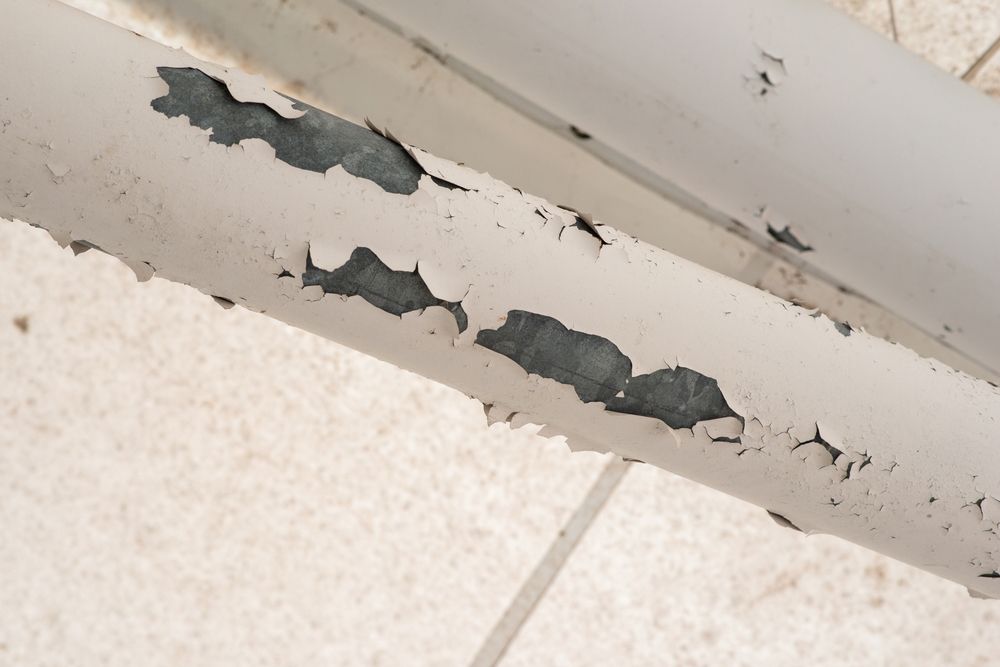Lead Paint Testing
The Dangers of Lead Paint
Envirotest Performs Lead Paint Testing Utilizing a Variety of The Most Advanced Tools Available
Many houses built before 1978 have paint that contains lead (called lead-based paint). Lead from paint, chips, and dust can pose serious health hazards, if not taken care of properly. In 1996 federal law requires that individuals receive certain information before renting, buying, or renovating pre-1978 housing. Sellers have to disclose known information on lead-based paint hazards before selling a house. Sales contracts will include a federal form about lead-based paint in the building. Buyers will have up to 10 days to check for lead hazards. Renovators will have to give you the information in this article before starting work.
Lead Gets in The Body in Many Ways
One out of every eleven children in the United States has dangerous levels of lead in their bloodstream. Even children who appear healthy can have dangerous levels of lead. People can get lead in their body if they: put their hands or other objects covered with lead dust in their mouths, eat paint chips or soil that contain lead, or breathe in lead dust (especially during renovations that disturb painted surfaces).
Lead is even more dangerous to children than adults because children's growing bodies absorb more lead and their brains and nervous systems are more sensitive to the damaging effects of lead. If not detected early, children with high levels of lead in their bodies can suffer from: damage to the brain and nervous system, behavior and learning problems (such as hyperactivity), slowed growth, hearing problems and headaches.
Lead is also harmful to adults. Adults can suffer from difficulties during pregnancy and other reproductive problems (in both men and women). Other effects are high blood pressure, digestive problems, nerve disorders, memory and concentration problems, and muscle and joint pain. Lead can affect the body in many ways.
Checking Your Family for Lead
Get your children tested if you think your home has high levels of lead. A simple blood test can detect lead levels. Blood tests are important for children who are 6 months to 1 year old (6 months if you live in an older home that might have lead in the paint) and family members you think might have high levels of lead. If your child is older than 1 year, talk to your doctor about whether your child needs testing. Your doctor or health center can do the blood tests. They are inexpensive and sometimes free. Your doctor will explain what the test results mean. Treatment can range from changes in your diet to medication or a hospital stay.
Where Lead-Based Paint Is Found
In general, the older your home, the more likely it has lead-based paint. Many homes built before 1978 have lead based paint. In 1978, the federal government banned lead-based paint from housing. Leas can be found in single family homes and apartments, inside and outside the house, in soil around a home. (Soil can pick up lead from exterior paint, or other sources such as past use of leaded gas in cars.)
Lead is most likely to be a hazard in paint chips, which you can see, and lead dust, which you can’t always see. Lead-based paint that is in good condition is usually not a hazard. Peeling, chipping, chalking, or cracking lead-based paint is a hazard and needs immediate attention. Lead-based paint may also be a hazard when found on surfaces that children can chew or that gets a lot of wear and tear, These areas include: windows and window sills, doors and door frames, stairs, railings and banisters, and porches and fences.
Lead dust can form when lead-based paint is dry scraped, dry sanded, or heated. Dust also forms when painted surfaces bump or rub together. Lead chips and dust can get on surfaces and objects that people touch. Settled lead dust can reenter the air when people vacuum, sweep, or walk through it. Lead in soil can be a hazard when children play in bare soil or when people bring soil into the house on their shoes.
Checking Your Home for Lead Hazards
Just knowing a home has lead-based paint may not tell you if there is a hazard. You can get your home checked for lead hazards in two ways, or both:
- A paint inspection tells you the lead content of every painted surface in your home
- A risk assessment tells you if there are any sources of serious lead exposure (such as peeling paint and lead dust). It also tells you what actions to take to address these hazards.
Have qualified professionals do the work. Trained professionals use a range of methods when checking your home, including visual inspection of paint condition and location, lab tests of paint samples, surface dust tests, and a portable x-ray fluorescence machine. Home test kits for lead are available, but should not be the only method used before doing renovations or to assure safety.
What You Can Do to Protect Your Family
If you suspect that your house has lead hazard, you can take some immediate steps to reduce your family's risk. Clean up paint chips immediately. Clean floors, window frames, window sills, and other surfaces weekly. Use a mop or sponge with warm water and a general purpose cleaner or a cleaner made specifically for lead. Thoroughly rinse sponges and mop heads after cleaning dirty or dusty areas. Wash children's hands often, especially before they eat and before nap time and bed time. Keep children from chewing window sills and other painted surfaces. Clean or remove shoes before entering your home to avoid tracking in lead from soil. Make sure children eat nutritious, low fat meals high in iron and calcium, such as spinach and low-fat dairy product. Children with good diets absorb less lead.
Removing lead improperly can increase the hazard to your family by spreading even more lead dust around the house. Always use a professional who is trained to remove lead hazards safely. In addition to day to day cleaning and good nutrition you can temporarily reduce lead hazards by taking actions like repairing damaged painted surfaces and planting grass to cover soil with high lead levels. These actions (called "interim controls") are not permanent solutions and will not eliminate all risks of exposure. To permanently remove lead hazards, you must hire a lead "abatement" contractor. Abatement (or permanent hazard elimination) methods include removing, sealing, or enclosing lead-based paint with special materials. Just painting over the hazard with regular paint is not enough. Always hire a person with special training for correcting lead problems, someone who knows how to do this work safely and has the proper equipment to clean up thoroughly. If possible, hire a certified lead abatement contractor. Certified contractors will employ qualified workers and follow safety rules set by the state or the federal government.
Remodeling a Home with Lead-Based Paint
If not conducted properly, certain types of renovations can release lead from paint and dust into the air. Take precautions before you begin remodeling or renovations that disturb painted surfaces (such as scraping off paint or tearing out walls). These include:
- Have the area tested for lead-based paint.
- Do not use a dry scraper, belt sander, propane torch, or heat gun to remove lead-based paint. These actions create large amounts of lead dust and fumes. Lead dust can remain in your home long after the work is done.
- Temporarily move your family (especially children and pregnant women) out of your house until the work is done and the area is properly cleaned. If you can't move your family, at least completely seal off the work area.
If you have already completed renovations or remodeling that could have released lead-based paint or dust, get your young children tested and follow the steps outlined above.
Other Sources of Lead
While paint, dust, and soil are the most common lead hazards, other lead sources also exist.
- Drinking water. Your home might have plumbing with lead or lead solder. Call your water supplier about testing your water. You cannot see, smell or taste lead, and boiling your water will not get rid of lead. If you think your plumbing might have lead in it, then use only cold water for drinking and cooking. Also run water for 15 to 30 seconds before drinking it especially if you have not used your water for a few hours.
- On the Job. If you work with lead, you could bring it home on your hands or clothes. Shower and change clothes before coming home. Launder your clothes separately from the rest of your family’s.
- Miscellaneous Sources. Old and new painted toys and furniture imported from less regulated countries.
- Food and liquids stored in lead crystal or lead-glazed pottery or porcelain.
- Foods and canned goods imported from less regulated countries.
- Lead smelters or other industries that release lead into the air.
- Hobbies that use lead, such as making pottery or stained glass, or refinishing furniture.
- Folk remedies that contain lead, such as "greta" and "azarcon" used to treat an upset stomach.
Useful Websites
We can perform a lead paint spot check and determinations in conjunction with a home inspection. To schedule a home inspection in call (781) 329-1133.



